Philips OLED 907 review: TV superstar
The Philips OLED 907 integrates a super sound system with a super OLED panel - is it the best all-in-one TV package of 2022?

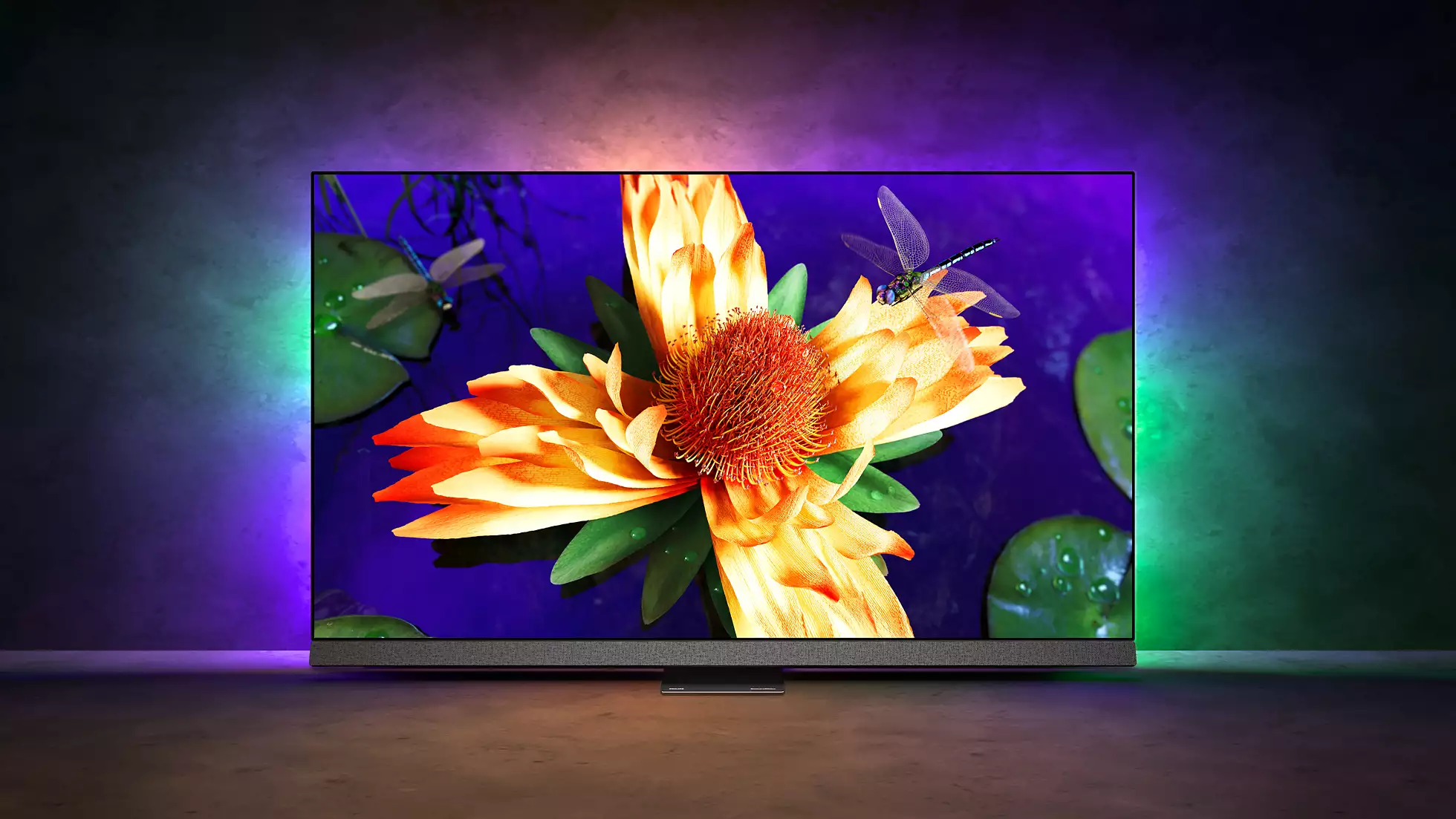
Doesn’t look any kind of bargain on paper, but once you realise there’s no need for further spending on a soundbar the Philips OLED+907 starts to seem better value. Then you see the picture quality of which it’s capable, and add in the unique effect of its three-sided Ambilight, and the price suddenly seems absolutely fair enough. This is a TV superstar.
-
+
Poised, accomplished images from any source
-
+
Ambilight is always a worthwhile experience
-
+
Unlikely scale and fidelity of sound
-
-
Takes a good while to set up
-
-
Android TV is a bit wilful
-
-
Not cheap
Why you can trust T3

Over the last few years, Philips has come storming back into contention where the TV market is concerned. It has a fully competitive offering at every price-point these days, and thanks to some clever technologies and discerning partnerships it’s able to give its televisions obvious points of difference in a market that generally seems in thrall to similarity. The OLED+907 range is 2022's example of the company’s determination to lead in the best TVs, but not so much from the front as from one step to the side. But it's a mighty fine approach that delivers with aplomb...
Philips OLED+907: Price & availability
The Philips OLED+907 is on sale now, and in the UK the 55-inch model costs £1999 - though it wouldn’t be the first OLED TV to enjoy a drop in price not too long after it launches. Philips isn’t currently selling its TVs in the United States, and there has been quite a lot of ‘umming’ and ‘ahhing’ from parent company TP Vision about whether the OLED+907 should be made available in Australia too. Using exchange rates as our guide, the 55OLED+907 will cost around AUD$3599 should TP Vision decide to do the decent thing.
This sort of money is approaching the ‘premium’ area of the OLED market these days. And the OLED+907 – also available in 48- and 65-inch sizes, each panel size's current price shown in the shopping widget below – will find competition from the likes of LG, Panasonic and Sony at every turn (as well as from Samsung with its ‘entirely different to OLED, honest’ QD-OLED models). Not for the first time, though, Philips has an added-value trick or two up its sleeve…
Philips OLED+907 review: Features & What's New?
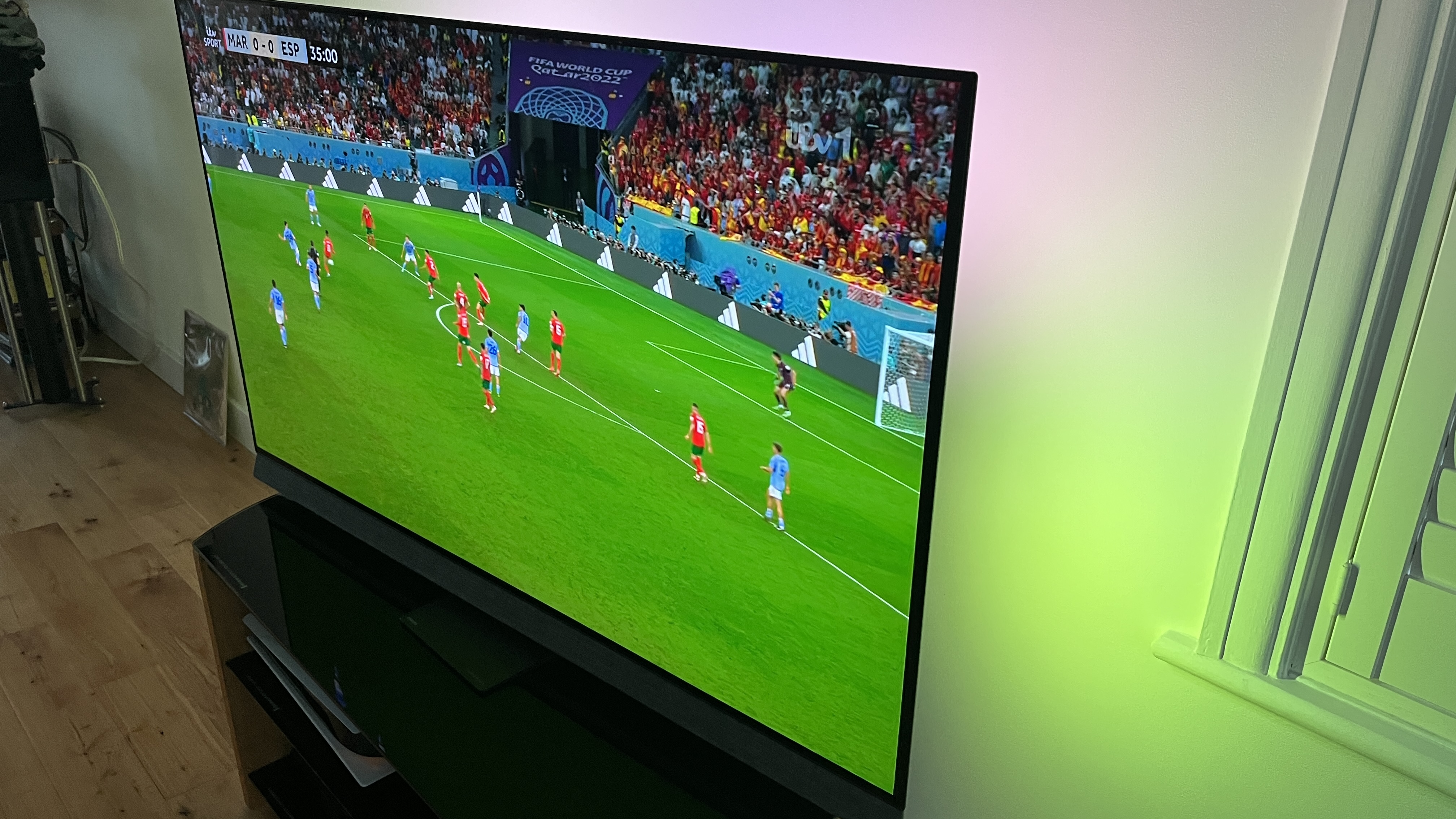
Of the biggest TV brands around, only Panasonic and Philips are prepared to act like grown-ups where high dynamic range (HDR) compatibility is concerned. So the OLED+907 - which is a 4K resolution screen, for the avoidance of any doubt - is compatible with every major HDR standard, with HLG, HDR10+ Adaptive and Dolby Vision the most noteworthy inclusions. In simple terms: there’s no HDR-assisted content currently available that won’t be exploited to the fullest by the OLED+907.
The quality of the picture you end up sitting in front of is governed by the Philips P5 picture processing engine. Here it enjoys an element of AI, which means it’s always learning and (in theory, at least) improving its responses. In conjunction with a slew of picture presets, including IMAX Enhanced and the always-risible Filmmaker Mode, the OLED+907 is working hard to bring you optimal picture quality.
In terms of getting on board in the first place, there’s a predictably extensive number of options. As well as everything its smart TV interface has to offer, the Philips features four HDMI inputs (two of which are at full-on full-fat HDMI 2.1 standard and one which has eARC compatibility), an Ethernet socket, three USB slots, and binding posts for terrestrial and satellite TV tuners. Wireless connectivity runs to dual-band Wi-Fi and Bluetooth 5.0, and there are physical outputs for a subwoofer alongside a digital optical socket.
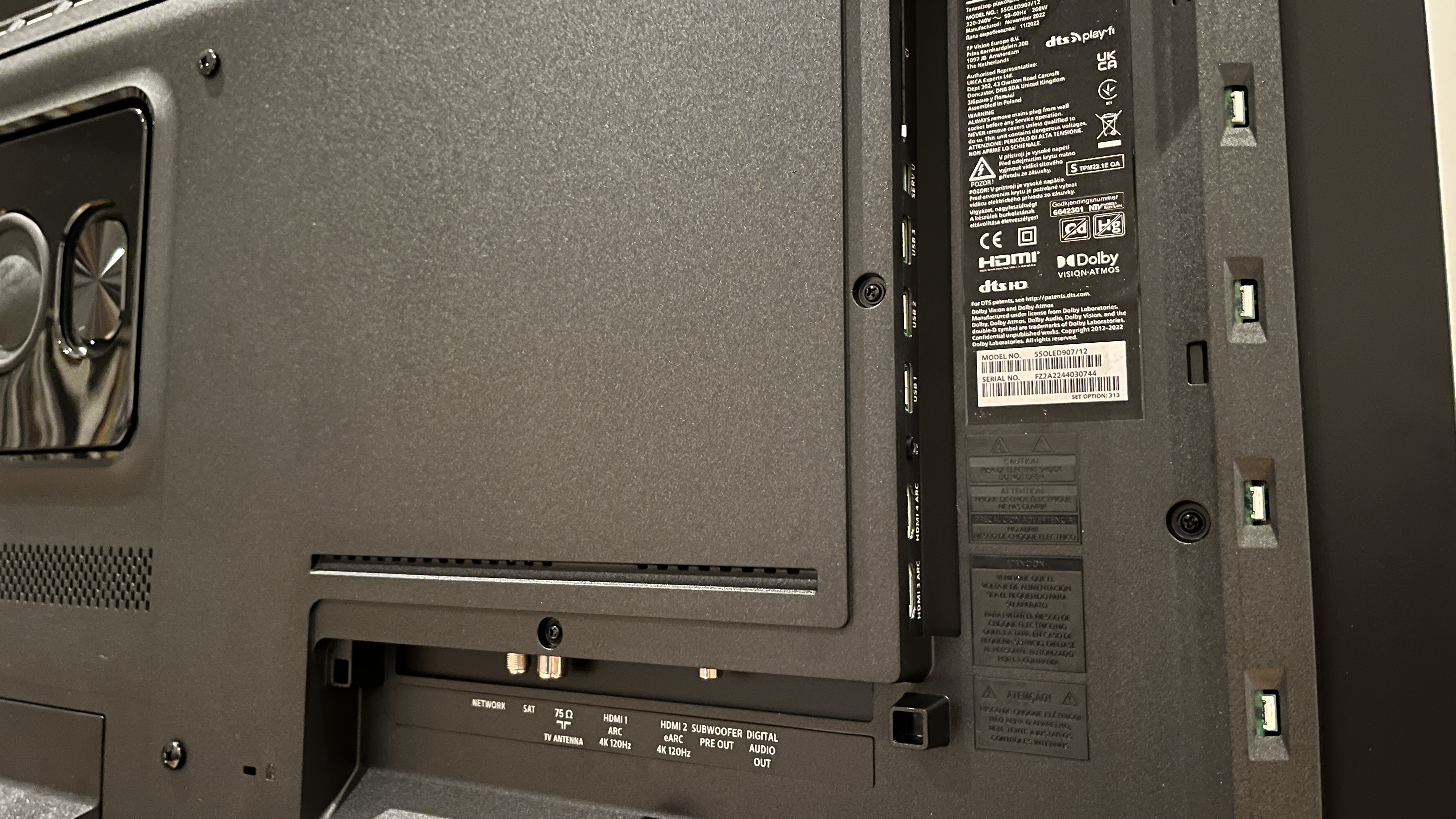
So far, so fairly par for the course. But the OLED+907 features the next generation of Philips’ excellent Ambilight feature, which flows light beyond the screen using back-positioned LEDs that adapt to the picture in real-time. Here Ambilight’s on three sides of the rear of the screen, and it’s just as worthwhile in this application as in every other. There’s no easier or more convincing way to make your TV seem bigger than it is, and more relaxing to watch than it otherwise would be… and only Philips can offer you this feature.
Get all the latest news, reviews, deals and buying guides on gorgeous tech, home and active products from the T3 experts
It’s only Philips that’s been far-sighted enough to partner with a company with the credibility of Bowers & Wilkins, too. For the OLED+907 the UK loudspeaker savant has developed a 3.1 channel audio system to try and bring the TV’s audio potency into line with its picture quality. Some of it is exposed on the rear of the chassis, the rest is hidden behind the soundbar-esque block of acoustic cloth running along the bottom of the screen. It’s Dolby Atmos-compatible (insomuch as it understands Dolby Atmos soundtracks, not that it’s trying in the slightest to deliver an impression of spatial audio), and it enjoys a total of 80 watts of power. Of that, 30 watts or so is taken by the rear-mounted ‘subwoofer’, while the remaining six forward-facing drivers get something like 8.5 watts each. The idea is that (for once) we won’t end our discussion of a TV’s sound quality by suggesting you should budget for one of the best soundbars.
The OLED+907 is, like a lot of the current Philips range of audio/video electronics, compatible with DTS Play-Fi. So your new TV can easily join in as part of a wider multi-room audio system, as well as form part of a multi-channel home cinema system.
Philips OLED+907 review: Performance
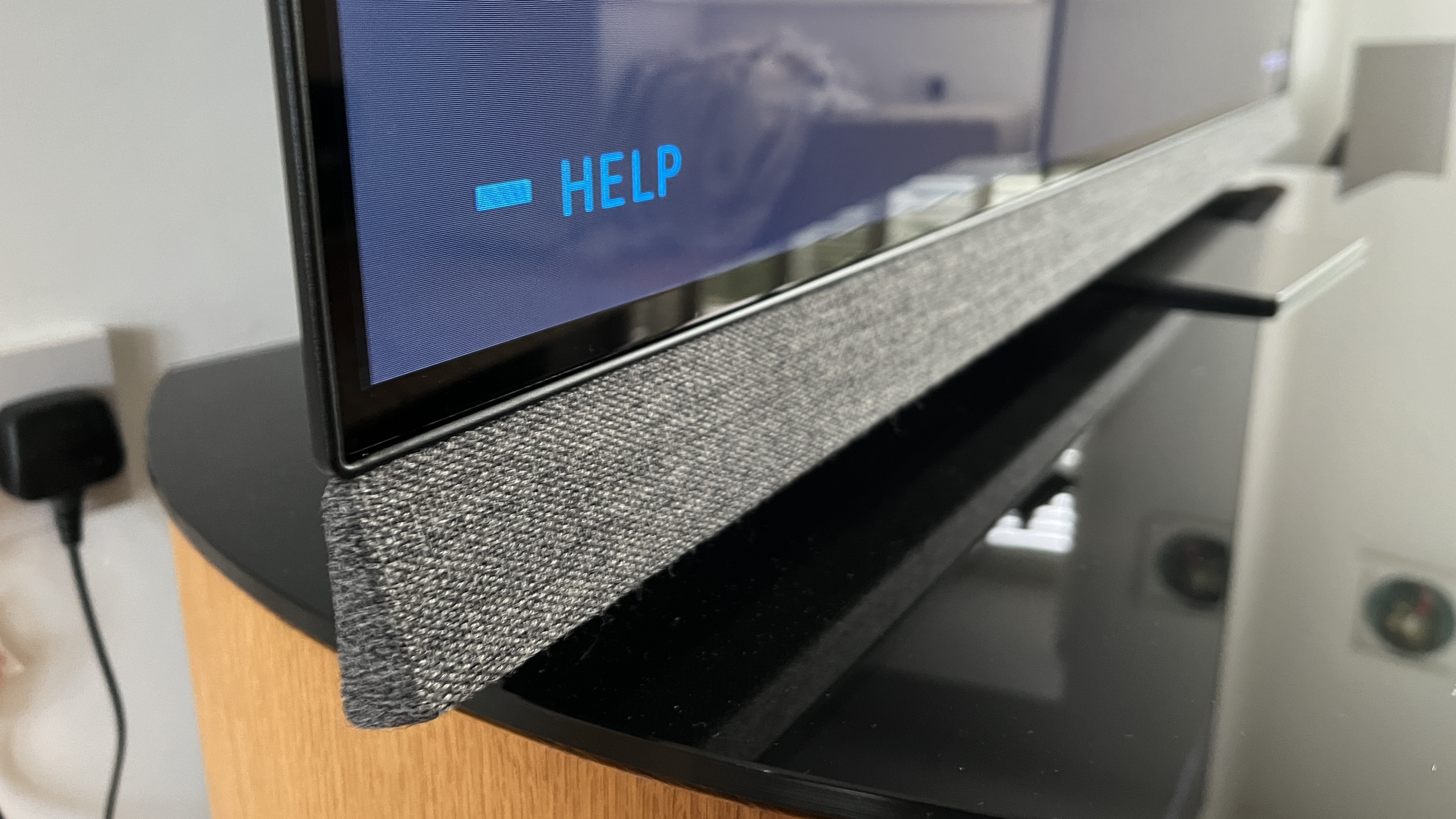
We may as well get right to it here. The Philips OLED+907 is an impressive and capable television, in every respect and in every circumstance. No matter if you feed in some 4K HDR content from a UHD Blu-ray disc, ask it to upscale some Full HD broadcast TV or really lo-res stuff from a ‘retro’ streaming service, or hook up a current-gen games console, it makes the best of it (and its ‘best’ is very good indeed).
It’s a similar story where sound is concerned too: the OLED+907 sounds much bigger and better defined than virtually any other TV you’ve ever heard (although the Panasonic LZ2000 will give it a run for its money).
Probably best to deal with some specifics, though. First of all, the ‘Royal’ OLED panel, which is LG’s most recent development and aims to increase the peak brightness of the technology considerably, makes its presence visible right from the off. There’s no shortage of detail and variation in the white tones the Philips can generate, but they’re a fair bit brighter than you are probably used to from an OLED TV.
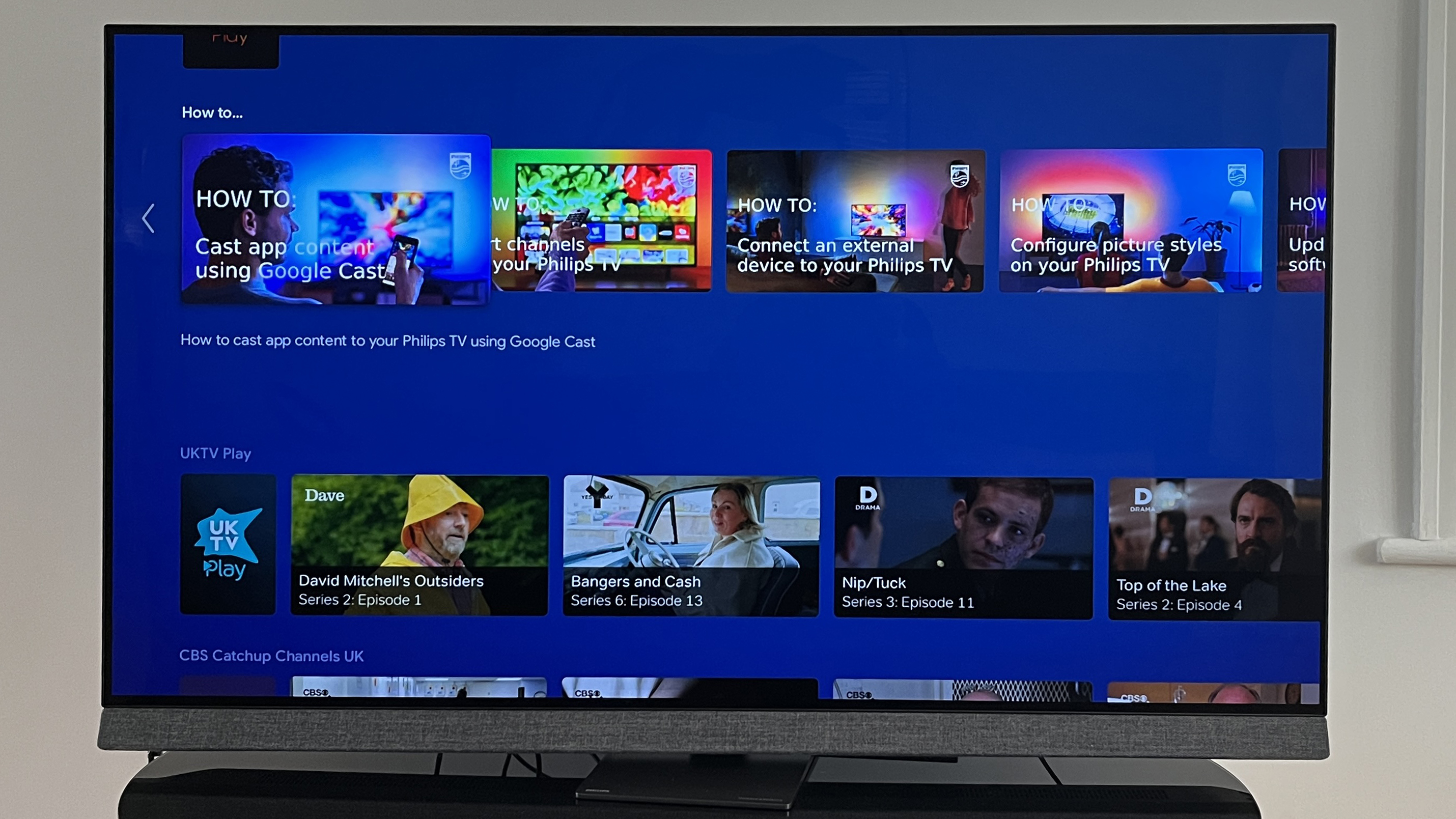
Set the screen up unsympathetically, and/or choose one of the more, um, vibrant picture presets and white tones will bleach into uniformity, but in most circumstances the OLED+907 is impressive in this regard. And given that it’s capable of delivering those OLED-tastic deep, detailed black tones, it follows that contrasts are wide and handsome.
The rest of the colour palette is equally well judged, with a nice balance stuck between ‘vivid’ and ‘naturalistic’. The Philips is alert to even the most subtle variation in shade or tone, and the result is confident, convincing picture-making that never looks overdriven or artificial.
Motion is controlled with authority, edges are drawn with assurance and depth of field is considerable. With 4K content picture noise simply isn’t an issue, and even when the OLED+907 is asked to upscale some Full HD content everything we've already said remains broadly true. The Philips can’t prevent some mild jaggedness creeping into complex textures or patterns, but it loses none of its positivity where motion is concerned. You have to really step down, in terms of resolution, to provoke this TV - and even then the drop-off in detail, and the increase in noise and softness, isn’t as pronounced as it is in some of the 907’s most obvious best OLED TV rivals.
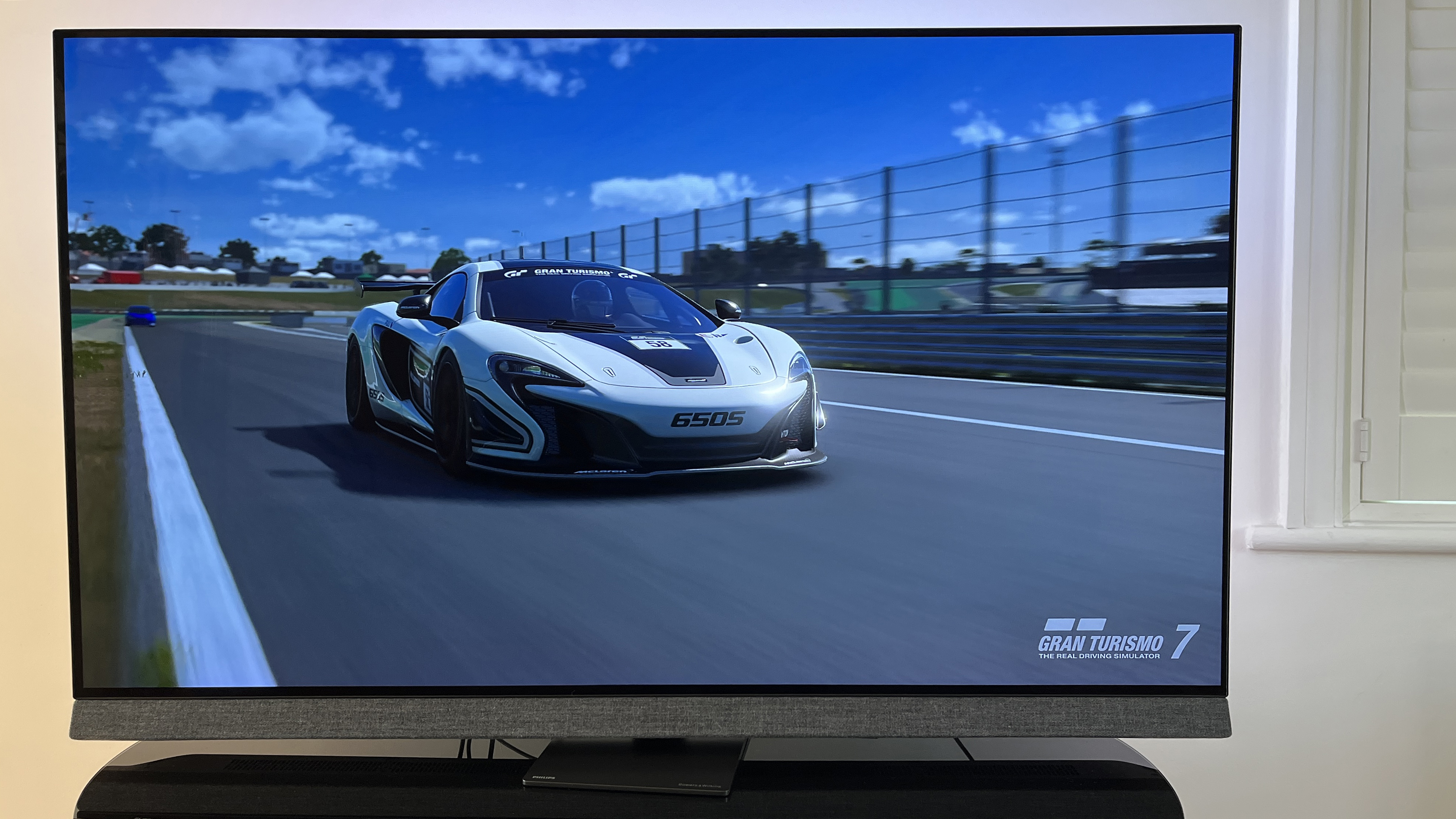
Switch to a current-gen games console hooked to one of the pair of HDMI 2.1 inputs and the good news just keeps coming. The compromises demanded by ‘HDR Game’ mode are mild, and they allow the Philips to get its input lag down to comfortably under 20ms - and the same lustrous colours, mastery of lighting and contrast, and rock-solid motion control are all in evidence.
Many companies treat the sound their TVs make as something of an afterthought, but that’s not how Philips rolls. Its partnership with Bowers & Wilkins is properly established now, and while the 3.1-channel, 80-watt system fitted to the OLED+907 doesn’t represent the high-point of this collaboration, it does make this TV better-sounding than pretty much every price-comparable alternative. Bass is respectably deep and properly controlled, with plenty of textural and tonal detail available, and the rest of the frequency range is nicely separated, convincingly staged and tonally convincing. The midrange is particularly enjoyable, thanks to the way it projects dialogue and allows some space to properly express speech. For once, here’s a TV review that doesn’t include the cut’n’pasted sentence “don’t forget to budget for a soundbar”.
Philips OLED+907 review: Design & Usability
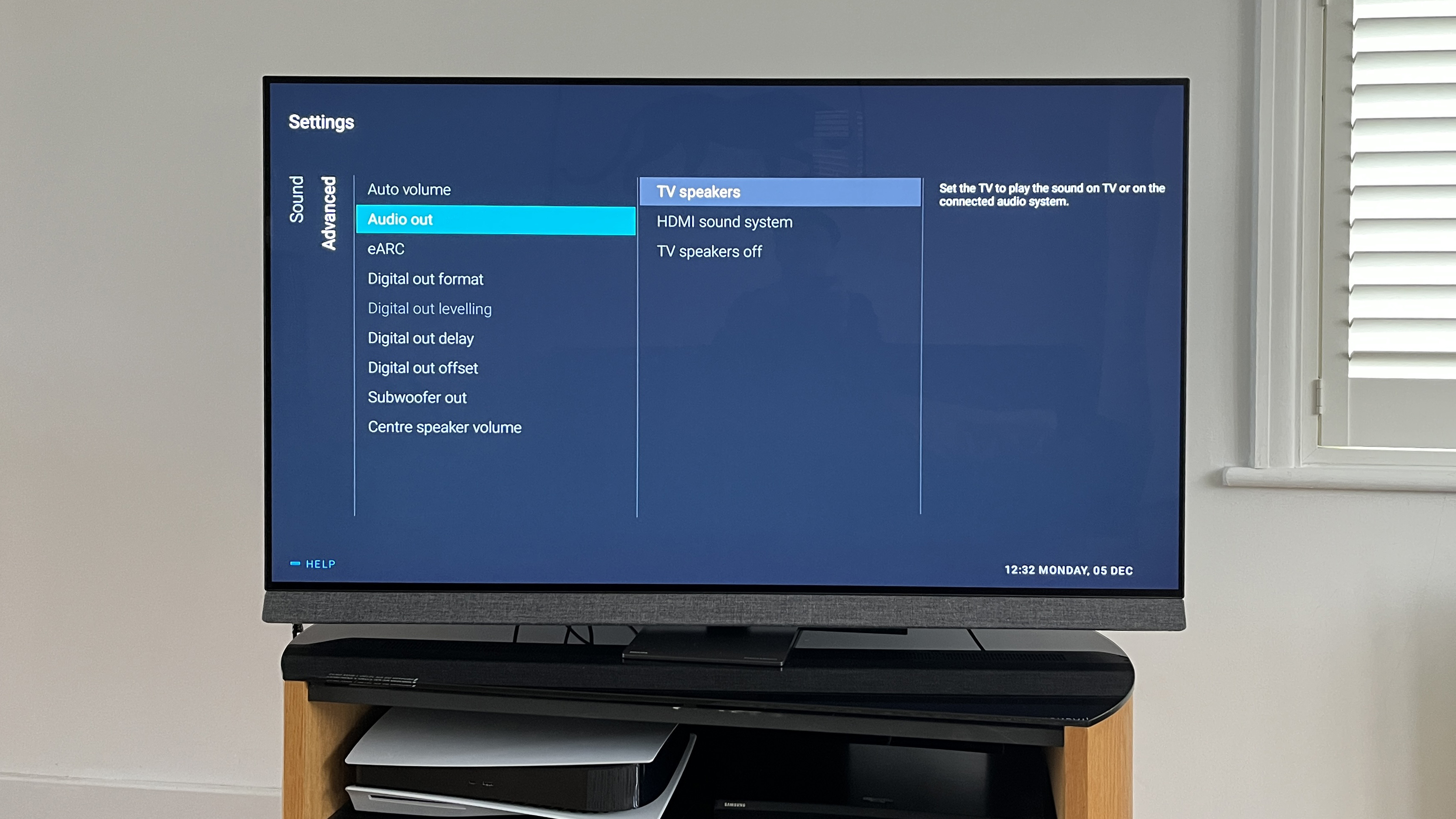
The OLED+907 manages to pull off the by-no-means easy trick of looking just slightly distinct. Every new TV looks basically the same as every other new TV, of course - and certainly with its slim bezels and central pedestal stand, this Philips is far from unique. But the slim strip of grey acoustic cloth beneath the bottom of the screen sets the OLED+907 apart at least a little.
That stand, which carries both the ‘Philips’ and ‘Bowers & Wilkins’ brand-names, lets the screen swivel through quite a distance - plus or minus 15 degrees, in fact. It may not sound like much, but as far as Philips is concerned this is something of a breakthrough. ‘Not having to physically move the entire TV’ to change the viewing angle is a definite advance on previous Philips TVs.
By current OLED standards, there’s quite an area of extreme skinniness towards the top of the screen when seen in profile. Below there, of course, it all gets a bit more prosaic - electronics have to be kept somewhere, after all. And besides, Philips can point to the appearance of three-sided Ambilight to explain some of the OLED+907’s 69mm depth.
There’s a little brand differentiation in the way Philips allows the user to control the OLED+907, too. Pretty much every rival manufacturer ships TVs costing this sort of money with a couple of little remote control handsets, one for major functions and one for everything - but Philips provides just one control. It’s big, yes, but it’s logically laid out and quite simple to use - and it’s backed in sustainable Muirhead leather, so it both looks and feels a notch or two above the usual.
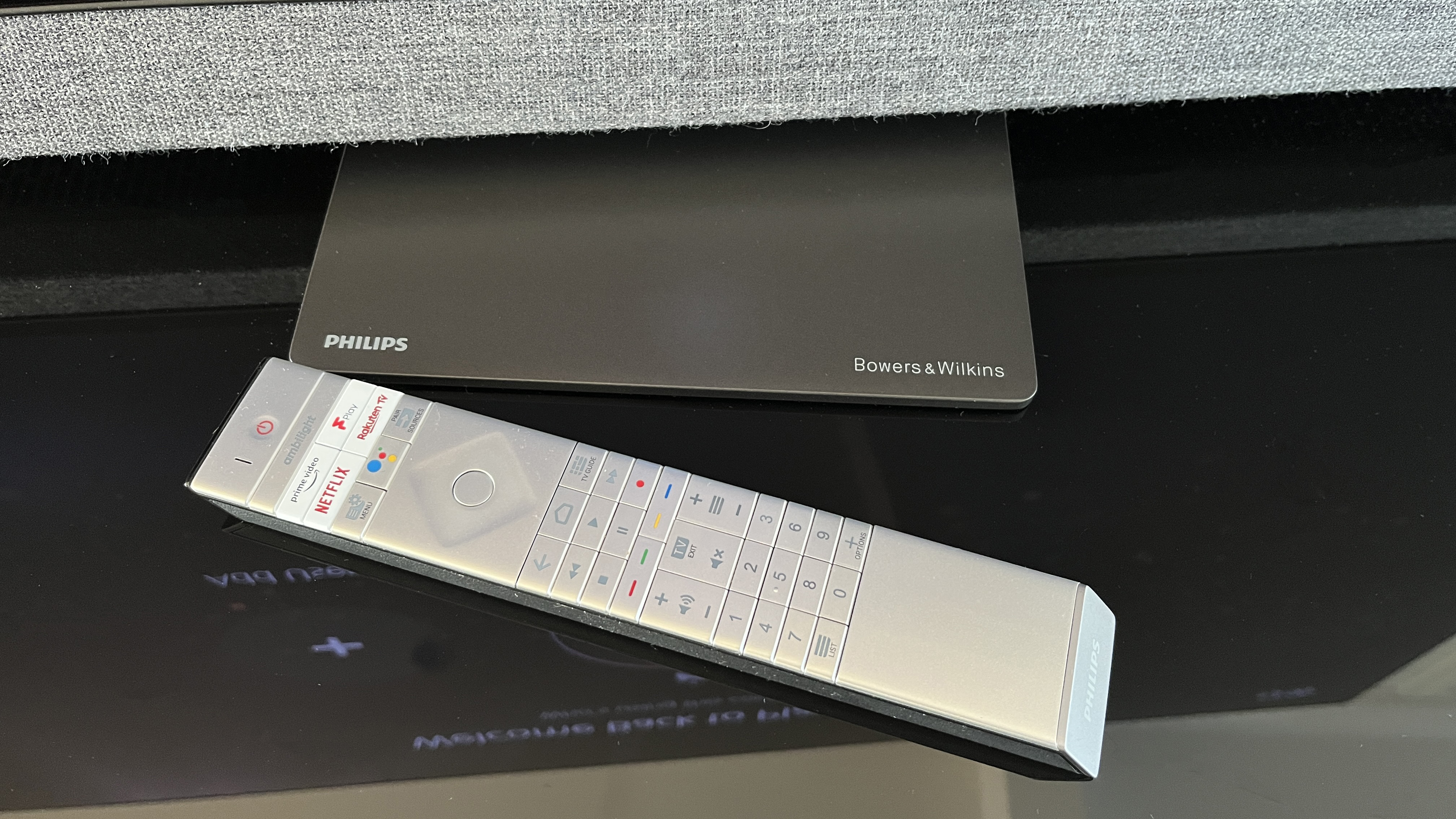
The remote puts you in touch with set-up menus that are typically Philips. That’s to say they’re notably extensive, in-depth and not especially friendly - you’ll find an absolute stack of adjustability both broad and fine here, but whether or not you find this level of engagement exciting or intimidating is a question only you can answer. Either way, don’t imagine you can take your new OLED+907 from its packaging, plug it in and expect it to look its best straight away. There are hard yards to be travelled if you want to maximise your investment.
Voice-control is available, too. That big handset has space for a ‘mic’ button, and from there it's easy to get Google Assistant to do your bidding. The Philips also works with Alexa - so those with an Alexa-enabled smart speaker on a common network can shout out orders too.
The OLED+907 uses Android TV (v11) as its smart interface. It’s a bit pushy, Android TV, hogging the entire screen and making fatuous recommendations, but there’s no arguing with the scope of its catch-up and streaming service offering. The biggest hitters (Amazon Prime Video, Apple TV, Disney+, Netflix) are all here, and all in the best-quality versions of themselves. And between Freeview Play, iPlayer, All4 and all the rest, you should never miss a moment’s broadcast TV.
Philips OLED+907 review: Verdict
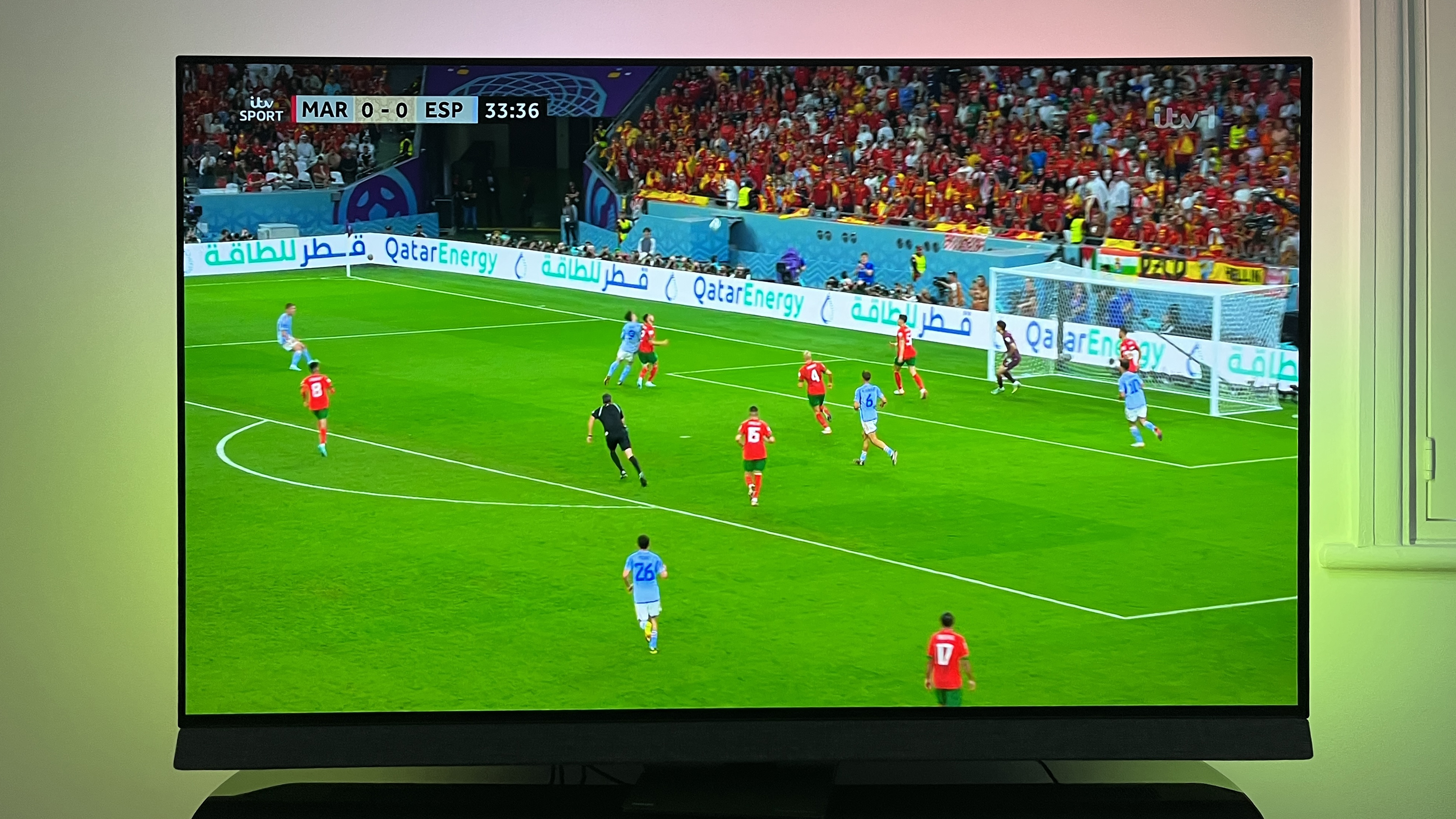
Although it's no fun to set up, once you see the light at the end of that particular tunnel the Philips OLED+907 is a painless and engrossing way to enjoy both sound and vision.
No, it doesn’t look any kind of bargain on paper initially, but once you realise there’s no need for further spending on a soundbar the Philips OLED+907 is actually remarkably good value. Especially given just how spectacular the picture quality is - and we love the Ambilight feature too.
Indeed, there’s no obvious downside to the Philips OLED+907. This is one of 2022's TV superstars.
Also consider
The 55-inch version of LG’s C2 OLED TV is a fair bit more affordable than the 55OLED+907, but is giving away nothing where picture quality is concerned - and, in fact, it’s an even more efficient gaming monitor than the Philips. Its sound doesn’t approach the quality of the 907, naturally, and you do without the remarkable Ambilight functionality too - but where the nuts and bolts are concerned the LG’s a diamond.
Simon Lucas is a freelance technology journalist and consultant, with particular emphasis on the audio/video aspects of home entertainment. Before embracing the carefree life of the freelancer, he was editor of What Hi-Fi? magazine and website – since then, he's written for titles such as Wired, Metro, the Guardian and Stuff, among many others. Should he find himself with a spare moment, Simon likes nothing more than publishing and then quickly deleting tweets about the state of the nation (in general), the state of Aston Villa (in particular) and the state of his partner's cat.
